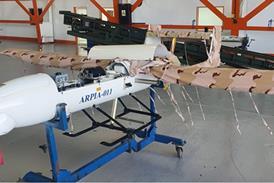US safety board recommends additional fatigue-related training for pilots
Fatigue resulting from insufficient rest and a long duty day was a contributory cause of the 19 October 2004 fatal commuter aircraft crash at Kirksville, Missouri, says the US National Transportation Safety Board’s initial report on the fatal accident.
The agency says tiredness “likely contributed to...the pilots’ failure to establish and maintain a professional demeanour during the flight [resulting in] their degraded performance”.
Criticising the US Federal Aviation Administration pilot duty time regulations as failing to reflect recent research on “pilot fatigue and sleep issues”, the NTSB recommends that pilots should be provided with “additional fatigue-related training” to increase their awareness and use of fatigue-avoidance techniques.
The agency has also repeated its standing recommendation that crash-proof video recording of the flightdeck should be fitted on all aircraft required to have a cockpit voice recorder (CVR).
The BAe Jetstream 32 hit trees and crashed during a localiser/DME approach to Kirksville’s runway 36, killing the crew and 11 of the 13 passengers.
The aircraft continued its descent unabated below the 300ft (90m) above-ground-level decision height, the NTSB has previously revealed. Although the board says it is still “making final revisions” to the full report, which will provide the complete rationale for its conclusions, it has nevertheless published the probable cause, conclusions and recommendations.
The cause, it says, was “the pilots’ failure to follow established procedures and properly conduct a night approach in instrument meteorological conditions, including their descent below minimum descent altitude before the required visual cues were available, which continued unmoderated until the aircraft hit the trees”. The pilots’ careless “demeanour”, their failure to adhere to sterile cockpit routines during the descent below 10,000ft and poor crew resource management probably resulted from fatigue, says the NTSB.
The NTSB concludes that an enhanced ground proximity warning system would have prevented the accident by providing a “too low terrain” voice alert.
The board also recommends that public transport operators should adopt constant angle-of-descent techniques in their non-precision approach procedures.
DAVID LEARMOUNT / LONDON
|
FAA attacked for failure to 'reflect recent research' |
Source: Flight International























